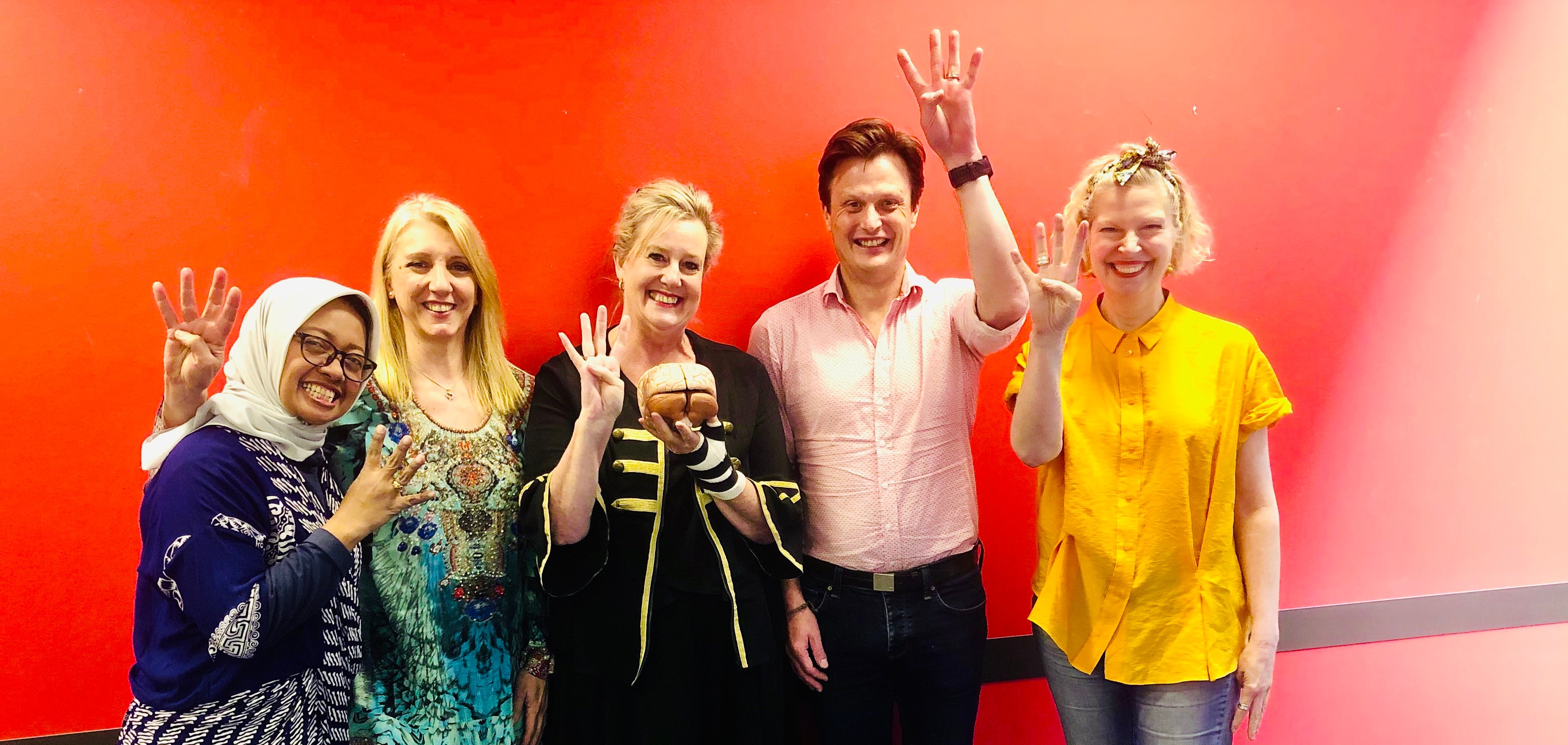
Leadership methods which do not focus on a “full-body” approach are more akin to putting a bandage on a wound rather than properly treating it at the hospital. The brain and body both require a delicate balance to maintain health and happiness, and unfortunately, many of today’s modern workers are struggling to find compassionate, innovative and resourceful leaders.
It’s Friday evening, and I’m buzzing!
I’m at the airport after spending three days with a group of passionate, intelligent and inspirational fellow devotees to the i4 Neuroleader Model & Methodology. It was stimulating and fascinating, and there were endless opportunities to reflect, gain new knowledge and consolidate prior learning.

In this frantic airport setting, I’m thinking about all the possibilities for using the i4 Neuroleader Model to do good! I’m ready to talk to leaders where I know the culture is toxic to some degree. I know these environments can be addressed in a positive and constructive way using the Model.
I’m looking forward to speaking with leaders in industries where the employees are underpaid and feel undervalued, such as in aged care, disability services and childcare. I know the Model can increase the engagement and sense of wellbeing for those staff.
I want to talk to some individuals I know who are struggling with their wellbeing. Again, I know that a 360 assessment and a debrief would be a useful place for them to start to address their challenges. I also would like to talk to teams where engagement and motivation are low.
At one point, I began speaking to a young professional woman who asked what I’d been doing in Melbourne. I explained that I had been undertaking instruction to become a Certified Practitioner in the i4 Neuroleader Model. Ah, she nodded wisely - "NLP" (Neuro-linguistic Programming).
“No,” I replied, and then I described the model with gusto! When I started referring to the head brain, heart brain, gut brain and the vagus nerve, there was a distinct glazing over, and I lost her. My enthusiasm to dive deeply was not so wise at that time!
So, my primary reflection is now around words and explanations. In the future, such an encounter will likely go something like this…
“Have you been a leader or watched a leader in action? Then you know it’s tough and it’s relentless. Let’s compare being a leader to an elite athlete - it’s also a tough and relentless life. What do they do to be successful?
They train, they learn new techniques, they are careful with their nutrition and their sleep. They vary their program and they have a coach.
They know about their times, their trends in results and they make amendments to their training program as they need to. They invest in their wellbeing and research new information that will give them the edge.
So, we need to look at leadership in the same way, and the i4 Neuroleader Model can move individuals toward being an ‘elite leader’.
And when that happens – everyone benefits.”
The key to the i4 Neuroleader Model is understanding through scientific research that the brain has the ability to rewire and make new connections.
Gail Eaton-Briggs
In anticipation that I still have his or her attention, I would go on as follows:
“Now I can tell you a little more about the i4 Neuroleader Model. Based on science and research, four competencies have been agreed as being core: performance, collaboration, agility and innovation.
To be high performing in these competencies, individuals need to perform strongly in the pillars of imagination, integration, intuition and inspiration and their respective elements of balance, ethics, mental readiness, communication, generosity, courage, drive, curiosity, attitude, awareness, influence and adaptability.
The i4 Neuroleader 360 Feedback Assessment will help you understand where you are at this time. After undertaking the assessment, a Certified i4 Neuroleader Practitioner will debrief you to discover areas that could be improved, areas of strength to leverage from and areas to explore further.
The comprehensive i4 Neuroleader Program and Workbook will help you to identify strategies which can be implemented in response to the results. The strategies you implement will shift the way the brain operates and achieve greater alignment to the 4 i’s of integration, intuition, imagination and inspiration, leading to increased performance, agility, collaboration and innovation.
The strategies are generally simple and easy to implement once you have identified those that appeal to you in the areas you choose to focus on.
For example, you could exercise often, keep a journal to self-reflect or develop an artistic interest to improve balance as an element of integration.
You could improve generosity as an element of inspiration by donating to charity regularly, acknowledge your team’s efforts, writing a note to say thank you or paying for someone’s lunch. To improve drive, you could study the lives of successful people, consider life obstacles as learning, never give up and find a physically challenging activity. The i4 Neuroleader Program & Workbook has many more ideas for each of the 16 pillars and elements.
You as an individual will see a positive difference, and your organisation and clients will benefit as well. Further, it is easier for us to be more compassionate, supportive and effective leaders when our brains and bodies are healthy.
When our brains do not work well, our performance, relationships and overall health can suffer.
You have likely experienced workplace situations where people or culture are described as toxic. From research, we know when the brain is not healthy and not working well, individuals will demonstrate behaviours which have adverse impacts on others and the environment can be unpleasant or even damaging.
You may see increased high levels of stress, absenteeism and accidents, increased conflicts, elitism, bullying, micromanagement, self-induced stress, a negative environment, stagnation and fixed mindsets, analysis paralysis and lack of direction.
When healthy brains are leading in the workplace, you will see higher levels of productivity, resourceful and solution-driven teams, better decisions, efficiency, better communication flow, more harmonious environments, faster solutions to problems, a ‘make it happen’ culture and a ‘fail quickly and try again’ mindset.
It’s important to consider the i4 Neuroleader Model an approach where you develop leadership and wellbeing. PWC have produced some research that is very compelling from a return on investment perspective. They say when organisations take effective action to create a mentally healthy workplace, they will receive, on average, a positive return on investment of $2.30 for every $1 spent.
Seems like a sensible way to go for me – who can argue with a sound return on investment in financial terms, improved leadership and wellbeing and a better business culture?”
These Stories on i4 Neuroleader Methodology

Gail is an i4 Neuroleader Practitioner, author, speaker, thought Leader and developer of bespoke people development solutions. Gail loves working with people; whether it be facilitating various processes, mentoring and coaching others or officiating at weddings and funerals as a Celebrant or providing motivation for personal growth through workshops and presentations.
Monday to Friday
9:00am - 5:00pm (AEST)
Sydney, Australia
We reply within 48 hours!
General Business Enquiries:
hello@aboutmybrain.com
Technical Support:
support@aboutmybrain.com
No Comments Yet
Let us know what you think